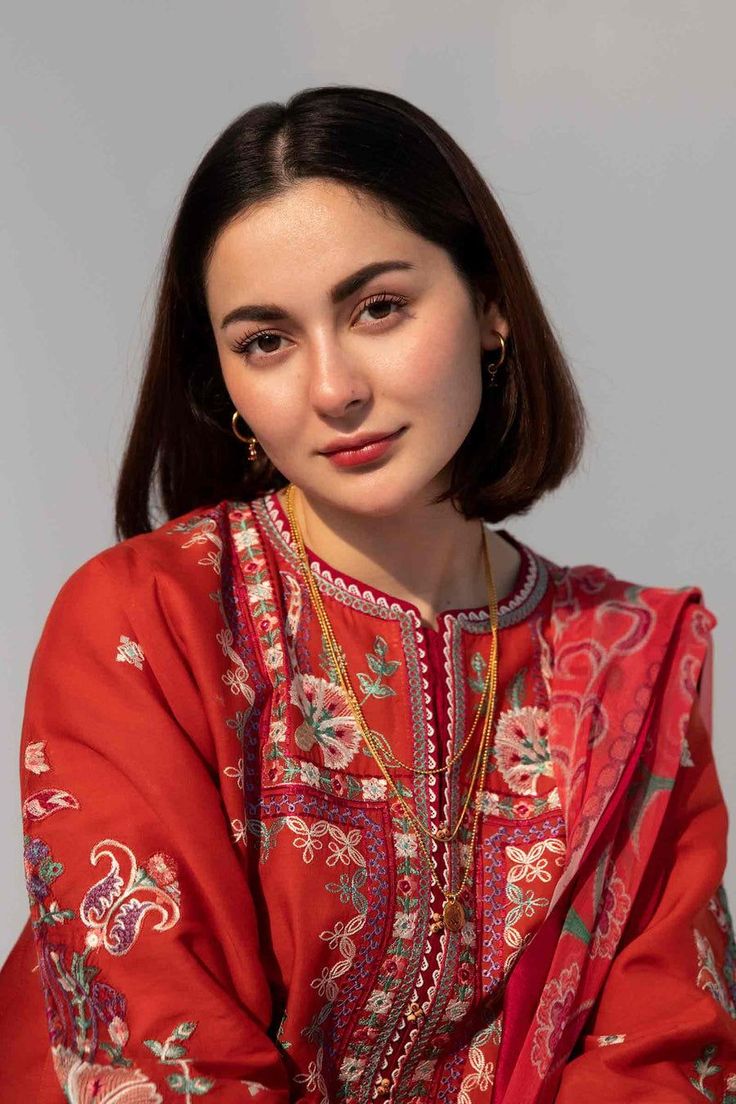Pakistani clothing is more than just fabric and stitches; it’s a vibrant narrative woven through centuries of history, culture, and artistic expression. From the ancient Indus Valley Civilization to the opulent Mughal Empire and the influences of various trade routes, the attire of Pakistan tells a fascinating story of identity, resilience, and evolving aesthetics. It’s a world where modesty meets intricate craftsmanship, and tradition dances gracefully with contemporary trends.
Pakistani Clothing
At the heart of pakistani clothing fashion lies the Shalwar Kameez, the national dress for both men and women. This versatile ensemble, comprising loose-fitting trousers (shalwar) and a long tunic (kameez), is a testament to comfort, elegance, and practicality. The simplicity of its form belies the endless possibilities for embellishment and personalization. Women’s shalwar kameez often feature varying lengths, necklines, and sleeve designs, adorned with a kaleidoscope of embroidery, from delicate threadwork to sparkling mirror work and rich zari. The dupatta, a long scarf, is an essential accompaniment, draped gracefully over the shoulders or head, adding a layer of modesty and enhancing the overall aesthetic.
But the world of Pakistani clothing extends far beyond the ubiquitous shalwar kameez. Each region of Pakistan boasts its own unique sartorial traditions, reflecting local climates, cultural nuances, and historical influences.
Punjab, the land of five rivers, is known for its vibrant and colorful Punjabi suits. Often embellished with Phulkari embroidery, a folk art renowned for its intricate floral patterns, these suits are a staple for celebrations and daily wear. The flowing Patiala shalwar and straight-cut kameez are popular choices, exuding an air of lively grace.
In Sindh, the attire is characterized by its distinctive mirror work and vibrant hues. The graceful Sindhi kurta is often paired with a traditional Ajrak, a block-printed shawl with geometric and floral designs, steeped in centuries-old heritage. The Sindhi topi, a traditional cap, completes the regional look for men.
Balochistan, with its rugged landscapes and nomadic traditions, showcases clothing that prioritizes comfort and freedom of movement. Loose and flowing garments, often adorned with elaborate handwork and bright colors, reflect the resilience and artistry of the Baloch people. The Gandhara embroidery is particularly notable in this region, showcasing exquisite craftsmanship.
Khyber Pakhtunkhwa (KPK) features the Peshawari shalwar kameez, known for its loose trousers and long tunics, often embellished with traditional embroidery. Men in KPK frequently pair their attire with a Pakol or turban and the iconic Peshawari chappal, a comfortable and stylish leather sandal.
Pakistani Clothing Trends
Beyond these regional variations, Pakistani fashion also encompasses a range of other traditional garments that make appearances, especially during festive occasions and weddings. The lehenga, a long skirt often paired with a choli (blouse) or a longer kameez, is a popular choice for brides and formal events, often intricately embroidered with zardozi and other rich embellishments. The Anarkali suit, with its frock-like silhouette and fitted bodice, evokes the grandeur of the Mughal era. Similarly, the Sharara and Gharara, wide-legged pants with distinct flairs, are cherished for their elegance and historical roots.
In recent decades, Pakistani clothing has undergone a fascinating evolution, blending traditional elements with contemporary trends. The rise of designer labels and fashion weeks has catapulted Pakistani fashion onto the global stage. Designers are experimenting with innovative cuts, silhouettes, and fabrics, creating “fusion wear” that seamlessly marries Eastern aesthetics with Western influences. You’ll see tailored cuts, asymmetrical hemlines, and a sophisticated use of luxurious fabrics like silk, velvet, and organza for formal wear. There’s also a growing appreciation for minimalist designs, alongside the ever-popular bold colors and intricate prints.
The influence of Pakistani clothing is increasingly visible on the international fashion scene, with its rich embroidery, vibrant colors, and unique silhouettes making their mark on street style and runway collections alike. From breathable lawn suits for summer to cozy pashminas and shawls for winter, Pakistani silk cloth offers comfort and style for every season.
Final Thoughts
Ultimately, Pakistani clothing is a celebration of heritage, artistry, and individuality. It’s a testament to the country’s diverse cultural tapestry, where each thread tells a story, and every garment is a work of art. Whether it’s the humble everyday shalwar kameez or a resplendent bridal lehenga, Pakistani clothing continues to evolve, reflecting the spirit of a nation that cherishes its past while embracing the future with open arms and a keen eye for style.



